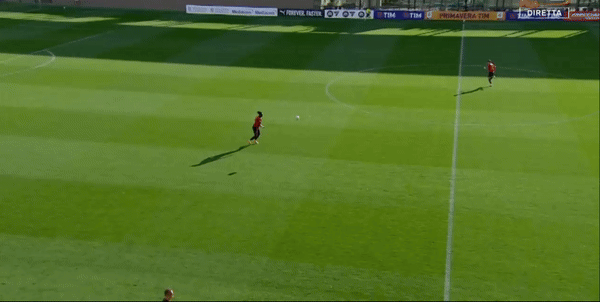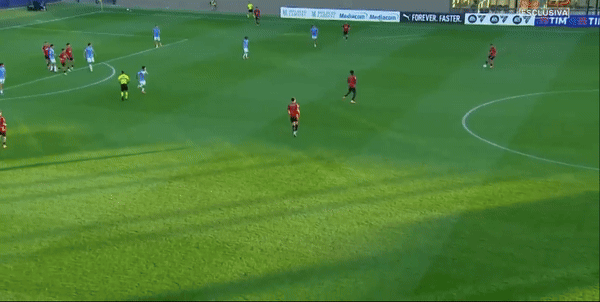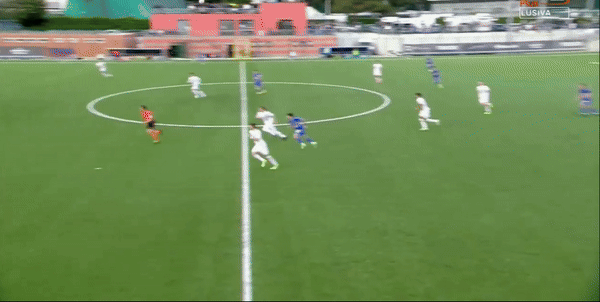
Summing up Rangers' recruitment as 'scattergun' since the summer of 2021 might be kind in the extreme, but it possibly speaks to a broader issue than just the players signed simply lacking the required quality.
With data and analysis becoming increasingly crucial to scouting departments around the globe, most clubs will attempt to identify critical attributes they'd ideally like their players to have. These could range from literal qualities such as passing and tackling to intangible attributes like leadership or mentality. The intelligent clubs will take this several steps further and build specific player profiles for each position or tactical role within their squad.
READ MORE: Check all the Rangers transfer news & rumours throughout the transfer window
These clubs will detail precisely what attributes say, a left-sided central defender should be able to play for their club. They should use this as a guide when reviewing their existing squad and identifying new talent. Are we a smaller club that will defend in a low block and probably needs a good, no-nonsense defender? Do we have a lot of the ball, face teams who sit deep and need our centre half to be comfortable in possession and help build attacks? Thinking about this in a more structured way gives everyone a clear framework to work from, making scouting much more manageable in theory. If you don't have a clear plan and have to rip everything up when a new manager joins, then problems can arise.
Looking at the Rangers, the last three first-team left-backs have been Ridvan Yilmaz, Borna Barisic, and Calvin Bassey. No data profile in the world would throw up those three players as being similar; therefore, in their way, they sum up the haphazard approach mentioned earlier. Each of the three players joined under a different manager who had a different way of playing and wanted different things from their left back in and out of possession. It's easy to see how teams can end up with a severely unbalanced squad, with players who are ill-suited to a new style of play under a new manager.
It's why a director of football or something similar is crucial: to recruit and plan at a higher level and with a longer-term vision than the shelf life of a manager - which is getting shorter and shorter by the year.
READ MORE: Inside Nsiala's rise to Rangers - Maldini backing, offers rejected and Clement vision
The failed pursuit of Panamanian international centre-back Jose Cordoba wasn't ideal, but signing players is never as easy as we think. So many people and outside factors are involved with multiple deals being juggled simultaneously. Understandably, there will be occasions when it doesn't go to plan. That's football.
The intriguing part for me was why we had identified Cordoba. Was it the player specifically, or were his attributes flagged as suitable for a new left-sided centre-back based on a pre-determined profile?
Was this the best centre half we could get for our agreed budget? Who was young but experienced enough to make an immediate impact, improve further and possibly be sold on for profit in the future?
Or did we have a detailed profile in mind for that left centre-half role, and Cordoba was merely one of several who met the criteria? Dominant physically, a strong one vs one defender, quick, good on the ball and young enough to develop. Would losing out on Cordoba see us move onto a similar target, or as we might have done in years gone by, go for a polar opposite type of player who just happened to be available?

The signing of Clinton Nsiala on a free transfer from AC Milan Primavera came out of the blue. Given that the 20-year-old didn't make a senior appearance for AC Milan during his four years there, it's tough to tell what type of player Rangers will be getting. The footage is limited to Campionato Primavera 1 and last season's UEFA Youth League, a competition Milan managed to reach the final of before losing 3-0 to Olympiacos.
But that word profile is essential again. On the face of it, Nsiala has attributes similar to those of Jose Cordoba, making it entirely possible that he has also been flagged as someone who will fit the tactical role the manager would like his left-sided centre-half to perform this season.
Nsiala played 42 games last season across domestic and European competitions, 40 of which were as a starter. Milan finished sixth in the Campionato Primavera 1 last season before losing to Lazio in the first round of the playoffs.
What immediately stands out is how much time Nsiala spends on the ball. The young Frenchman attempts the most passes of centre-backs in this league, with 75.2 per 90 and a completion rate of 87%.

John Souttar - generally regarded as Rangers' best centre-half on the ball - attempted 63 passes per game last year with a completion rate of 91%. So, Nsiala will undoubtedly be used to being on the ball, albeit at the Under-19 level in Italy. As we know, possession is one thing, but how you use the ball is quite another.

His passing over longer distances can sometimes be more successful than his shorter passing as outlined above. Milan used Nsiala frequently when building up play, and his passing range seems quite varied. On multiple occasions, he would look to bring the ball forward before switching play to the right-hand side of the pitch to allow an attacker to isolate their defender one-on-one.

This is outlined above. On this occasion, Nsiala picked up a long ball and drove forward into the opposition's half before launching a crossfield pass to the right wing, who could then isolate his full-back.
That direct pass from defence is a weapon we've seen Rangers under Clement utilise pretty often this season, and Nsiala has that in his locker.
His skills on the ball aren't limited to passing, as Nsiala also averages 1.54 dribble attempts per 90 - fifth best for central defenders in this league. He completed an impressive 68% of these, the best amongst his peers. Intriguingly, this is over double the number of Leon Balogun attempts (0.63 per 90), who ranks fourth in the SPFL. In context, in his final season at Celtic, Kristoffer Ajer attempted 1.27 dribbles with an 88% success rate and was widely classed as excellent at this particular skill.

Here, we see a mix of both, with the player carrying the ball forward before launching a more precise lobbed pass from a shorter distance to the opposite side of the pitch.

There are many ways to break down a defensive team - quick passing through the lines, long passing, or carrying the ball forward. If Rangers can utilise Nsiala's strengths in this area, they could be handy weapons during the build-up phase.
Nsiala is very mobile and athletic and can cover the ground well. He likes to engage the opposition higher up the pitch than might be expected, which is another helpful attribute for a Rangers central defender.
Standing at 6ft, Nsiala could be classed as short for a centre half, and this may be a slight area of concern. He was involved in just 3.18 aerial duels per 90 last season, with a 58% success rate. Playing for a club like Milan may mean he has less defending to do which could account for the low numbers here. John Souttar attempted 5.75 aerial duels last season, winning 77%.

The limited footage available backs up the figures mentioned above. Nsiala has a few deficiencies in the air. He sets himself well to prepare for challenges, and his jumping timing seems sound, but he needs more aggression during the actual challenge. On several occasions when the attacker won the header first, a more dominant centre-half might have had the upper hand.

This clip could sum up Nsiala's skillset. He loses the aerial duel with the forward but can outmuscle him to win the ball back. Once under control, he dribbles free of danger before clipping a pass forward to begin an attack.
Defending in transition will be a hugely important aspect of his time at Rangers, an area where Nsiala could have potential. Last season, he made an impressive 10.65 recoveries per 90 minutes, showing an excellent ability to read the game and snuff out dangerous counter-attacking situations.

The eye test only partially backs this up, as that lack of aggression and dominance of his attacker can be unpredictable. At times, he uses his body well and sticks a leg out to win the ball, but at others, he can be easily bypassed or mistime a challenge.
Nsiala looks to have the physical profile and technical skillset to become an excellent central defender. At this stage, he appears more proficient on the ball than the more basic defensive attributes, but that's the case for many defenders in the modern game.
The profile of this signing on a free transfer makes sense. He's not the finished package, but that's understandable, given the lack of senior appearances. He looks like a player with plenty of potential who can improve under Clement's tutelage.



Comments: Our rules
We want our comments to be a lively and valuable part of our community - a place where readers can debate and engage with the most important local issues. The ability to comment on our stories is a privilege, not a right, however, and that privilege may be withdrawn if it is abused or misused.
Please report any comments that break our rules.
Read the rules here